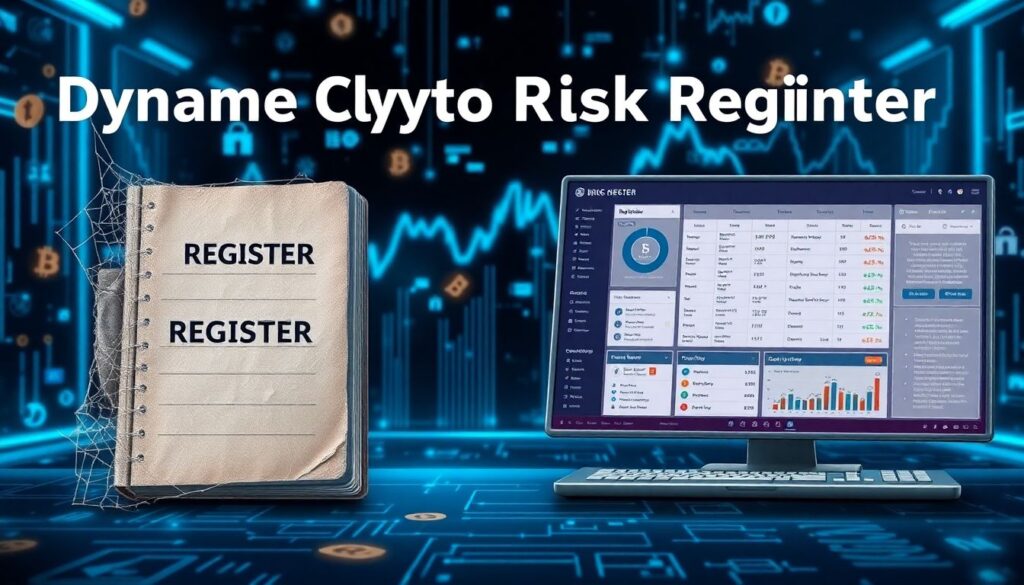Beginner Guide to Building a Personal Crypto Risk Register
If you’re new to crypto, you’ve probably heard this more than once: “Don’t invest more than you can afford to lose.” While that’s solid advice, it’s vague. What really protects your investments is understanding your personal risk exposure — and for that, you need a risk register.
In this guide, we’ll break down how to build a personal crypto risk register from scratch, explain its purpose, and help you avoid the most common pitfalls that leave beginners exposed.
What Is a Crypto Risk Register?
A risk register is a structured document — digital or on paper — that tracks all the risks associated with your crypto activities. Think of it as a threat radar for your portfolio. It doesn’t eliminate risks but helps you identify, evaluate, and mitigate them in a transparent, organized way.
Typical elements include:
- Risk description — What exactly could go wrong?
- Likelihood — How probable is the event (low/medium/high)?
- Impact — If it happens, how bad is it?
- Mitigation — What actions will reduce or offset this risk?
- Status — Is this risk open, mitigated, or closed?
Now let’s build one tailored for crypto enthusiasts.
How to Build a Personal Crypto Risk Register
1. Identify Your Activities and Assets
Before you can list risks, define your crypto footprint. Are you:
– Holding BTC and ETH long-term?
– Yield farming or staking on DeFi platforms?
– Trading altcoins on Tier-2 exchanges?
– Using browser wallets or cold storage?
Each activity introduces a different risk profile, so break down your behavior into categories and asset types.
2. List Associated Risks
This is where most beginners go wrong — they underestimate the range of potential threats. Here are some common risk categories to consider:
- Custody Risks: Losing seed phrases, faulty hardware wallets, exploits in browser extensions
- Platform Risks: Exchange insolvency, smart contract vulnerabilities, rug pulls
- Market Risks: High volatility, low liquidity for niche tokens, slippage
- Regulatory Risks: Tax compliance, wallet tracking, account freezes
- Operational Risks: Poor password hygiene, phishing attacks, copying wrong wallet addresses
Write each risk as clearly and concisely as possible. Vague entries like “Lose money” are useless — instead say “Private keys stored only in browser extension — risk of total loss from malware.”
3. Assess Likelihood and Impact
Be honest with yourself. If you’re trading on a newly launched DEX with doxxed developers, smart contract failure might be a medium likelihood and high impact. Use a simple scale like:
– Low
– Medium
– High
Pair that with impact:
– Small financial loss
– Major loss (25–50% of funds)
– Total asset loss
This scoring helps prioritize what to deal with first.
4. Plan Mitigations
Mitigation is what separates amateurs from proactive risk managers. For each risk, write down what you’re doing (or *should* be doing) to reduce vulnerability.
Examples:
– Risk: Seed phrase stored on cloud storage
→ Mitigation: Move seed to offline, laminated paper backup in secure location
– Risk: Using low-liquidity altcoins on obscure DEX
→ Mitigation: Set slippage limits; allocate <5% of total portfolio value
Keep mitigation realistic and actionable — otherwise, you’ll ignore it.
5. Review and Update Regularly
The crypto landscape evolves fast. A secure protocol today could be tomorrow’s cautionary tale (see: Luna/Terra, FTX). Set a routine — monthly or quarterly — to:
- Review existing entries
- Add new risks as your activity expands
- Update status (e.g. “mitigated”, “new”)
Use a version history or date stamps to track changes.
Top Mistakes Beginners Make
Building a risk register is one thing. Using it effectively is another. Watch out for these common errors:
1. Ignoring “Low Likelihood” Risks
Many think, “It won’t happen to me.” But black swan events (smart contract exploits, coordinated phishing) can wipe out holdings overnight. Don’t dismiss low-probability events if the impact is catastrophic.
2. Not Accounting for Behavior Risks
FOMO-driven trades, panic selling, or revenge trading after a loss aren’t technical risks — they’re behavioral. But they’re just as important. Track them. Write down examples and mitigation strategies (e.g., use trading limits, journaling, block access to exchanges during emotional hours).
3. One-Time Setup, Then Forgotten

A stale risk register is as dangerous as having none. Crypto is dynamic — new platforms, rules, vulnerabilities appear constantly. Your risk register should evolve with your portfolio.
4. Confusing Wallets with Security

Newsflash: Using a hardware wallet isn’t enough if you connect it to any random DeFi protocol. Smart contracts can still drain funds. Your wallet is only one layer — not the entire fortress.
Final Thoughts
A personal crypto risk register won’t predict the next black swan event, but it will prepare you for it. Think of it as your personal firewall — constantly updated, adjusted, and strengthened over time.
Start small. Don’t try to list everything at once. Add as you go, and most importantly — use it. Crypto isn’t about eliminating risk, it’s about managing it intelligently.
And that’s something even the pros have to relearn.

